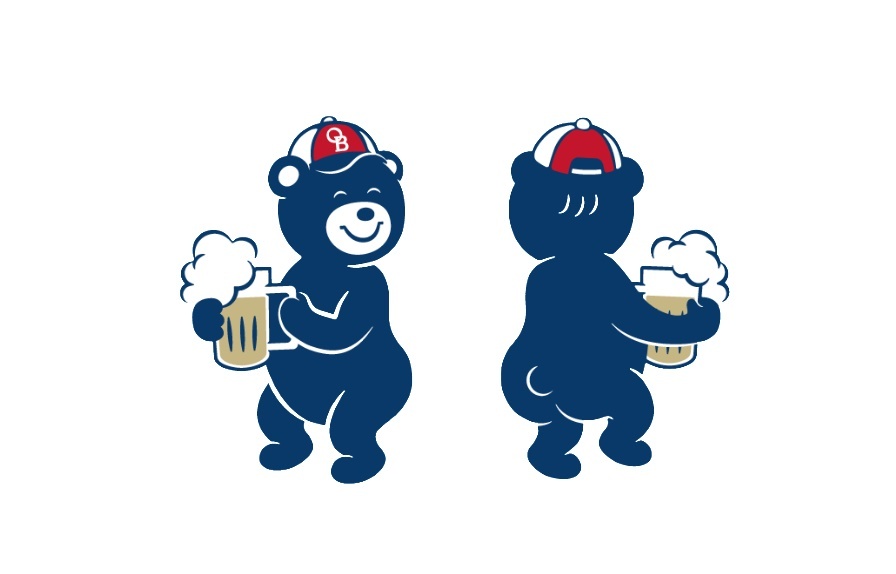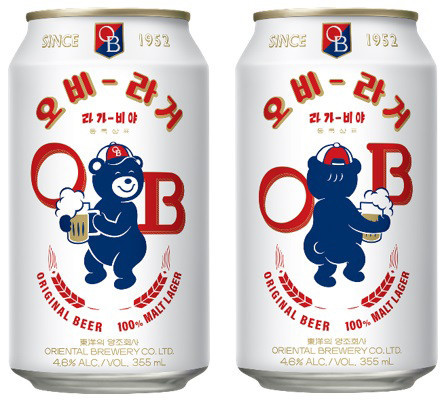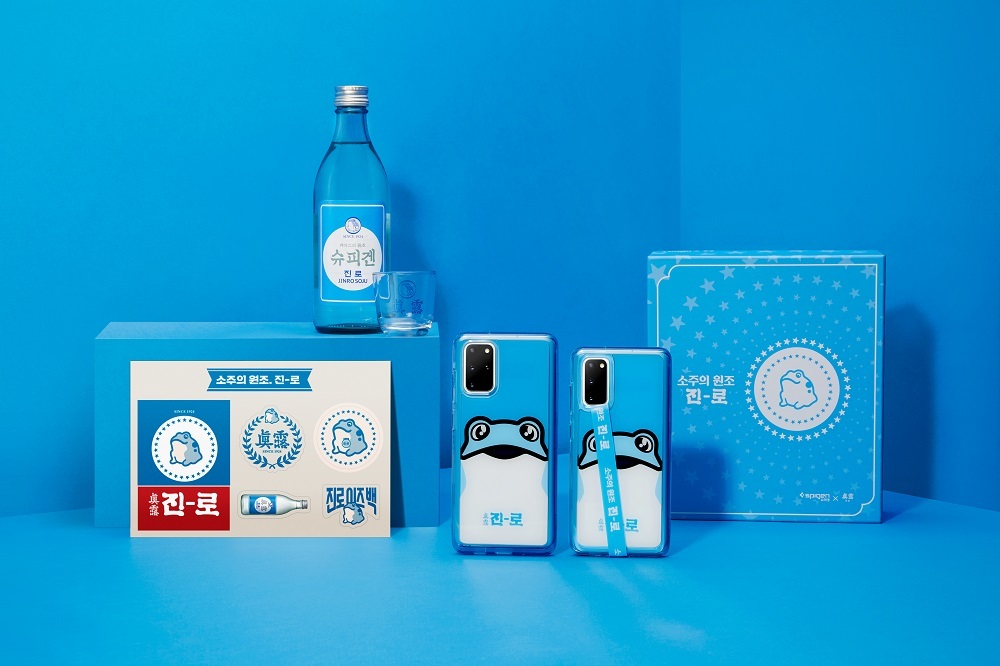
Oriental Brewery‘s mascot character Lala Bear (OB)
Two major alcohol companies in Korea have one thing in common lately -- a high-profile retro mascot that has become the face of the company.
Oriental Brewery brought back its nostalgic bear character from the 1980s known as “Lala Bear,” while its rival HiteJinro released a blue bottled soju featuring its famous toad mascot last year, a character that dates to 1954.
Their foray into soft power territory comes following a year dominated by “Pengsoo,” a beloved giant penguin that went from being an educational TV channel’s mascot to a cultural icon here.
“After we released OB Lager last year, consumers showed interest in Lala Bear merchandise. We’ve also had multiple collaboration projects to produce collectables using a familiar character for the growing number of home drinkers this year,” an official at Oriental Brewery said.

OB Lager featuring Lala Bear on its package (OB)
Originally created in 1980 to represent Oriental Brewery’s pub franchise OB Bear, the bear character has been making appearances everywhere this year, collaborating with fashion brand Guess, getting the KakaoTalk emoticon treatment and even having its own pop-up shops at popular restaurants in Seoul and Suwon, Gyeonggi Province.
Jinro’s toad, which has no official name according to HiteJinro, has also enjoyed recent stardom. Having widely featured in TV commercials and on the label of the bottle, the company has teamed up with online retailer 11Street to sell a wide range of the toad-inspired merchandise in the Christmas season.
When asked about the character’s appeal, the company said the mascot is “familiar, yet new.”

Spigen Korea‘s collaboration project with HiteJinro earlier this year included a phone case, a shot glass, a strap and stickers. (Spigen Korea)
“It brings back memories for those in their 40s and 50s while young people in their 20s and 30s see Jinro as a new brand,” said one official.
The revamped version of a discontinued soju from Jinro, aptly named Jinro Is Back, has quickly become a hit after its release last year. It was the most preferred brand among university students this year, according to University News Network.
Despite the coronavirus pandemic, the distiller saw its operating profit rise by nearly 31 percent compared to a year prior, hitting a nine-year high on the back of strong sales of Jinro Is Back and its pale lager Terra.
Professor Sung Youl-hong at Hongik University’s Grduate School of Advertising and Public Relations said mascots are part of the company’s branding strategy.
“With so many products out there, the ultimate goal of a mascot nowadays is to spread awareness of the brand rather than how great the product is,” he said.
“For instance, soju and beer companies are creating a symbol since it is harder to stand out with how it tastes alone now,” the professor added.
A survey by recruiting website Job Korea also found that 4 in 5 millennials perceived “merchandise marketing” positively, with 58.8 percent saying it feels “satisfying, as if collecting limited editions.”
Though mascots go through a cycle, Sung said they are here to stay in the long run, though with a twist.
“In the past, mascots had to be pretty looking, but in recent years expectations have changed and ‘elements of fun’ have become crucial.”
The character-heavy packaging of the blue bottled soju also came as a departure in design from the more traditional-looking green bottles from other brands, some of which have featured female celebrities who are also brand ambassadors.
Last year, the Ministry of Health and Welfare said it would consider a move to amend the National Health Promotion Act and prevent celebrities from appearing on labels of soju and beer bottles, following concerns the industry practice glorifies alcohol consumption.
By Yim Hyun-su (
hyunsu@heraldcorp.com)








